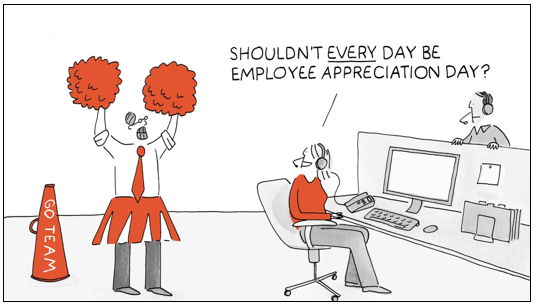The Importance of Positive Reinforcement in Safety
By Paula Kennedy (Safety Director – Project Condor)

Source: https://www.youtube.com/watch?v=x6SQXWyEh7A
Everyone wants to receive praise for their efforts and hard work. From infancy on, we seek approval from authority figures. As babies, our parents’ excitement as we take our first steps encourages us to keep walking in order to receive a similar positive reaction. As children, our teachers’ praise for working hard and performing well in class encourages us to keep striving for good grades.
This concept morphs as we age only in the types of activities we seek positive reinforcement for and who we seek it from – not in the fact that we seek it in the first place. It therefore makes sense that authority figures in the workplace should utilize this method to encourage workers to perform well and put forth their best efforts. This applies not only to productivity, but to safety as well.
When workers’ safety is only acknowledged as a fault, it creates a negative mindset associated with safety as a whole, but also with the person who is correcting the unsafe action or behavior - someone who oftentimes is an authority figure. As an example, an employee may take appropriate safety precautions 99% of the time. If, on a certain day, an unsafe situation occurs, and this is the only time the employee is addressed with respect to safety (in the form of a correction or reprimand), the employee may remedy their actions but may also be resentful that it was only brought up in this one instance. Their consistently safe behavior was never acknowledged, and the one exception is brought to light instead. It is natural for the employee to become frustrated by this. As a further consequence, the employee may think that their safe efforts are going unnoticed or are meaningless and may feel resentment toward the person who corrected them, or even toward workplace safety altogether.
One simple way to avoid the above situation and to motivate employees to work safely is to consistently provide positive feedback. Employees will not only feel good in the moment that they are receiving the positive recognition but are more likely to repeat the safe behaviors that they are being praised for. Furthermore, if an unsafe situation is corrected, it will be counterbalanced by the regular praise they have received as well, so that the one unsafe instance isn’t the primary mention of safety, and there is not a negative connotation associated with workplace safety or the person correcting the unsafe act.
Providing positive recognition does not need to be for any one outstanding behavior, either. Let us say that a project is having a trend of unsafe observations with respect to a specific topic, the use of GFCI protection on electrical cords. If management or site safety is walking through the work area, and notices a worker using a GFCI, that is the perfect opportunity to approach the individual and thank them for taking the extra step toward electrical safety. In addition, if the employee is informed that GFCIs are a hot topic of improvement at the moment, they may feel even more proud that they did the right thing and got noticed for it. Just this small interaction can help increase the likelihood that they will remember to use a GFCI again next time, thus reducing future unsafe conditions.
Finally, it must be noted that safety recognition does not need to come in the form of material possessions or formal praise or rewards. A mere verbal acknowledgement can prove successful and motivational. Imagine the impact of a high-level executive recognizing an employee’s strong safety efforts with a simple “I appreciate you driving cautiously and safely on that forklift through these high traffic areas – keep up the great work!”. This can cause an employee to go from feeling like just another number to feeling like an actual contributor and positive impact on the worksite. With boosted self-esteem, an employee can become more committed to performing well, both in terms of safety and production.

To learn more about specific steps and tips to optimize the use of effective positive reinforcement, check out the following EHS Today and Officevibe articles:
https://www.ehstoday.com/safety/science-behavioral-safety-101-little-praise-goes-long-way
https://www.officevibe.com/employee-engagement-solution/employee-recognition

